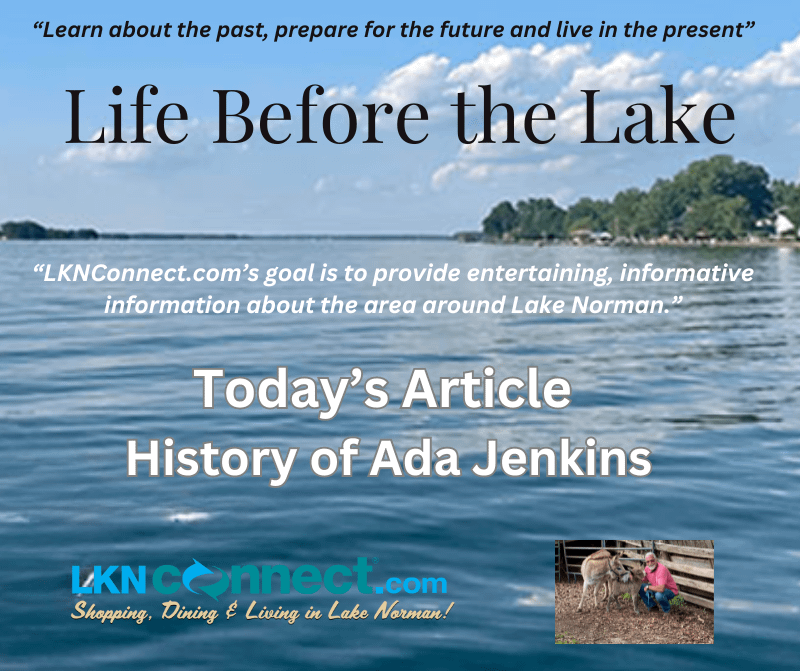This article is one of the first in a new section on LKNConnect.com’s website entitled “Life Before The Lake.” Check back often to hear other stories about the area.
At LKN Connect® our goal is to help engage the community while supporting local businesses and leaders with powerful connections, professional insights, and unique growth opportunities.
We want to inspire our subscribers to celebrate everyday life. That’s why we’re bringing local to life with a daily dose of the best ways to embrace living in Lake Norman.
Our “doses” are feature articles, videos, and snapshots with just enough information to keep you updated and on trend with ways to connect and thrive while living in Lake Norman. And our directories will help lead the way!

The Catawba Indian Nation is one of the indigenous Indian tribes that settled the Carolina Piedmont. They hunted and farmed their ancestral lands in the Piedmont area of North Carolina and South Carolina. The Catawba were once one of the most powerful tribes in the Carolinas.
The group of Native Americans that lived around the Catawba River were called the Kawahcatawba, meaning “the people of the river.” They lived in tiny, bark-covered homes with rounded roofs. The tribe survived on corn, squash, beans, and fish from the river. They were also known to hunt passenger pigeons using a blowgun.
The Catawba Tribe numbered in the thousands and thrived until the smallpox epidemic in 1738. By 1780, only five hundred Catawba remained.

White settlers started arriving in the 1740s. A mile west of the Catawba River, in current Catawba County, Adam Sherrill was one of the first settlers to build a permanent home in the area. Farther south, the Torrences, Jettons, and Potts were farming the fertile bottom lands.
In 1747, Adam and his family moved from Virginia and settled on the west side of the Catawba River. Adam spent two days scouting the river. He crossed it at a shallow area where three islands made the dangerous passage easier, reportedly after Sherrill saw buffalo crossing there. Adam later received a land patent in 1749 on acreage located on the west bank of the Catawba River. This spot came to be called Sherrill’s Ford.
Adam had an advantage that other early settlers didn’t, which was that he spent several years of his childhood living with the native Susquehanna Tribe near Conestoga, Pennsylvania. The Susquehanna spoke an Iroquoian dialect, and Adam became fluent. The Cherokee and Catawba tribes, living on the banks of the Catawba River, also spoke an Iroquoian dialect. Adam apparently negotiated a lease with the Cherokee that allowed him to stay while other settlers were harassed or even killed.
For perspective, over two decades after Adam settled at Sherrill’s Ford, a town called “Charlottesburg” was founded about 10 mi (16 km) to the south. This settlement later grew into the modern metropolis of Charlotte.

Source: Adam Sherril and Sons, Sherrills Ford. Photo by S. Bowman
“Sherrill’s Ford Named for Catawba Pioneer, Adam Sherrill Crossed River In 1747 and Built Homestead on West Bank,” Charlotte Observer (Charlotte, NC), March 18, 2007

The area was well suited for growing cotton and soon became a cash crop. Because of the growth, cotton mills started to spring up in Davidson and Cornelius. In future articles I plan to go into more detail about how the cotton industry helped shape the local towns of Cornelius and Davidson.

We invite you to visit the website at www.Lknconnect.com and subscribe to our weekly newsletter. Once subscribed, our newsletter, entitled “Sunday Reflections”, will be delivered to your e-mail. This will provide you with the previous top articles and upcoming events.

I have lived in Huntersville all my life. My grandkids, who live on our farm off Gilead Road, are the eighth generation in the area. I am often asked about “Life Before The Lake,” which sparked my interest in discovering Lake Norman’s history.
It has been exciting to research the area. In doing so, I have been introduced to writers Chuck McShane (A History of Lake Norman), Cindy Jacobs (Images of America, Around Lake Norman), and Leslie B. Rindoks (A Town By Any Other Name). They have all published books about the history of the area. Much of the information I am writing about comes from their books. I have also gathered information from the Historical Society groups from the surrounding towns.
